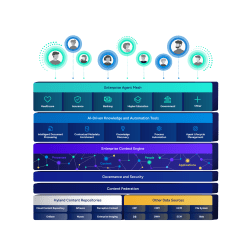6 reasons to adopt open source DAM software
There are many reasons to adopt an open source DAM solution, from customization options to cutting costs, and even the inclusion in active support communities. The top six reasons to adopt an open source DAM software include:
1. Increased agility with customization
As mentioned above, the public source code enables developers to customize and secure the DAM experience with features that are relevant to their environment. This means if the out-of-the-box platform doesn’t have a feature they want, they can build it themselves. They can change the entire content and product life cycle, depending on their objective or the team structure. Just as importantly, visible source code allows developers to ensure applications meet even the most stringent security standards.
2. Greater scalability
Open-source DAM platforms provide increased scalability when compared to out-of-the-box DAM solutions. For example, when users add new assets to an open source platform, they can add new features to enable users to discover and protect those files.
Get details in this guide: How and why Hyland’s Nuxeo Platform benchmarked 11 billion documents
3. Cost-effectiveness
One of the most significant advantages of an open source DAM platform is that the licensing can be more cost-effective. For example, when an open source vendor is focused on support or hosting, it often means there aren’t expensive per-user licensing models. While there may be costs for storing a high volume of assets, it is still a cost-effective alternative to the high license and storage costs of proprietary DAM tools.
4. Take advantage of open source marketplaces
With open source DAM solutions that provide a marketplace (Hyland’s Nuxeo Marketplace, for example), users can deploy packages to extend functionality and integration points, or even contribute their own packages to deploy across multiple instances.
5. Open source DAMs are also ready out-of-the-box
Most open source DAM platforms have a comprehensive feature-set available immediately that is usable without writing new code. Default features enable users to make immediate impacts when adopting a new DAM solution.
Read more about digital asset management workflows and DAM taxonomy.
6. Enjoy robust community support
Many open source DAM tools have an active user community that makes collaborating quite simple. Easy accessibility to the community and all its knowledge means faster platform modifications and pathways to innovation.
For example, Hyland Community (the interactive customer community for all of Hyland’s products) supports and highlights ways to enhance product use cases that may otherwise seem out of reach.











